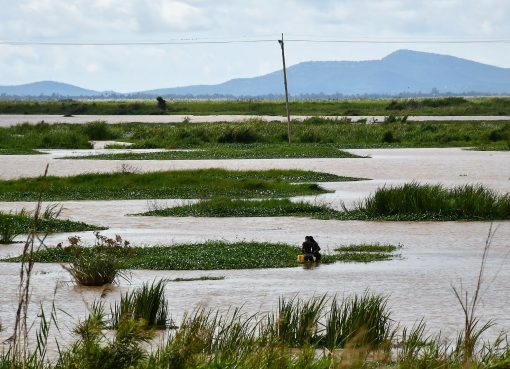Rice farmers in Mwea have been sensitized on the management of the destructive snails in paddy rice production
The move, according to a researcher at the Mwea Irrigation Scheme Vincent Koskei is meant to equip the farmers with the knowledge of how to deal with the snails currently destroying their rice crop.
Koskei said there are more than 100 species of apple snails that exists with two Pomacea canaliculata and Pomacea Maculata, commonly known as golden Apple snails being highly invasive and causing damage to the rice crops.
He said snails are able to spread through irrigation water canals, natural water distribution pathways, and during flooding events.
“When water is absent, apple snails are able to bury themselves in the mud and hibernate for up to six months and may reemerge when water is reapplied.” he said
Koskei said the snails attacks direct wet seeded rice and transplanted rice up to 30 days old, once the rice plant reaches 30-40 days, it will become thick enough to resists the snail.
He said farmers have been equipped with the knowledge of distinguishing the golden apple snails from the native snails through their colour and size.

“Golden apple snails have muddy brown shell and golden pinkish or orange-yellow flesh. They are also bigger and lighter in colour compared to native snails with their eggs appearing bright pink in color,” Koskei said
The researcher said the snails are considered a major problem of rice and if no control measure is taken one adult snail can destroy one square meter of a field overnight. This he said can lead to more than 50% yield loss
“We are educating the farmers to take precaution and try to minimize the menace from the snails by following the guidelines we have issued to them,” he said
He said the critical time to manage golden apple snails is during land preparation and crop establishment or planting, specifically the first 10 days after transplanting and or during the first 21 days after direct wet seeding
After this, the crop is generally resistant to snail damage and snails are actually beneficial by feeding on weeds.
The official said to best control the snails, communities should work together to reduce the snails’ numbers in their area.
They should conduct mass snail and egg collection campaigns involving the whole community during land preparation and planting or crop establishment,” Koskei said
The other mitigation measure according to the researcher is to keep fields drained as much as possible during the vulnerable stages of the rice plant (below30 day) or transplant 25 -30 days old seedlings from low-density nursery beds.
The other control method Koskei said would be to introduce domestic ducks in the fields during final land preparation or after crop establishment when plants are big enough 30 -35 days after transplant.
Koskei said the snails could also be destroyed by handpicking and crushing the egg masses. This he said is best done in the morning and afternoon when the snails are most active.
He said farmers are also advised to place bamboo sticks to provide site for egg-laying that allow easy collection of snail eggs for destruction.
“One can also use attractants or plants that attract snails such as leaves of papaya and cassava plants to make handpicking easier,’ he said.
“It has also been found that Apple snails have difficulty in moving in less than 2 cm of water, so farmers can control their spread by keeping water level below the 2cm during the vulnerable stages of the rice plant.
“In a situation of a serious invasion of snail pest in a localized area, an option to practice closed season may be advisable. This will mean going a full season without a crop by making the land fallow,” Koskei said.
He said farmers in the Tebere area of the scheme which is most affected by the menace have also been advised to use barriers where water enters and exits the field by placing a wire /screen on the main irrigation water inlet and outlet to prevent snail entry.
“Transplanted rice is less vulnerable than direct-seeded rice, we are telling farmers to plant healthy and vigorous seedling, raise seedlings in low nursery beds, and delay transplanting to reduce missing hill snail damage,” he said
Koskei said, currently there is no locally available chemical product that is registered for use as a molluscides (chemicals to manage snails).
By Irungu Mwangi





